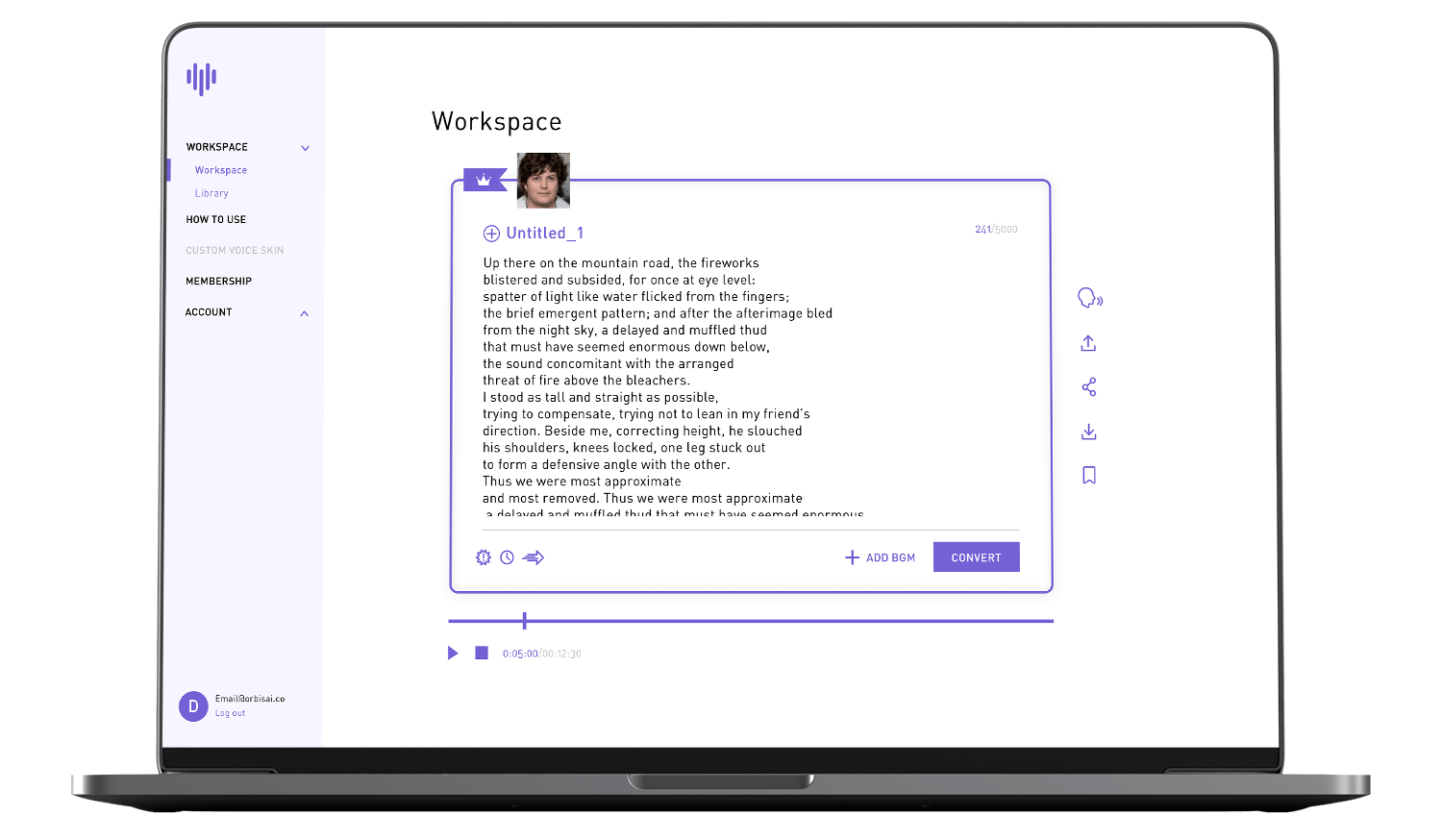eLearning, Meet AI: Introducing Automated Voice Content Creation
They say nothing beats the face-to-face interaction between a pupil and a teacher, whether it be young children huddled up with their peers in a classroom or full-grown adults battling the onset of sleep and the constant buzzing of notifications on their phones while the instructor drones on in an auditorium.
But, what if you can’t? I don’t know, maybe some global pandemic prevents you from getting together? (This VentureBeat article shares its own opinion, but you should read that after this.)
But First: $$$
According to 2018 Training Industry Report by Training Mag [1], the total U.S. corporate training expenditures amounted to a staggering $87.6 billion. (To put it into perspective, Dell’s 2019 revenue was $90.6 billion, and Facebook’s revenue was $70.7 billion.) The total eLearning expenditure was estimated to hit $325 billion by 2025 [2].
More than half ($47 billion) of the expenditure was spent on training payroll, with about $30 billion spent on travel, facilities, equipment, etc. That only leaves about 11.4% to be spent on any product or service directly related to training. If you were to submit a marketing proposal to your CMO or CEO where only 11.4% of your budget had anything to do with the actual content production, distribution, and customer engagement, you would be out on the streets before that proposal hits the trash can.
Going more in detail, companies across the board spent on average $986 per learner. But note that this excludes the opportunity cost of the workers taking time away from their daily responsibilities, or the impossible reality of getting everyone’s schedule aligned, so the final cost soars even higher.
But wait, that’s not it—because most companies utilize a "spray and pray" tactic and don’t have a follow-up to these workshops, the bulk of the investment in training gets washed down the drain. Kind of like the “Spaghetti Test,” where you throw pasta against a wall to see if it is cooked. If it sticks, then it is ready to serve, but if it doesn't, shucks, boil 'em some more!
However, with COVID-19 sweeping through the empty seats left vacant by employees that were laid off and students being sheltered-in-place, these numbers should only be weighed by the fact that money was, and will be, spent on eLearning.
Tech For Class: Voice Assistants As Teaching Assistants
Ok, let’s talk about the actual tech: first, in classrooms.
As Forbes notes, voice assistants opened doors for students with difficulties to find other avenues of learning and being tested [3] and for students to interact with the speaker as their new teacher, fellow student, and library of information. It freed both the educators and students from temporal and spatial limitations and created a new platform for providers of educational materials.
Aside from being potential substitutes, they complement in-person classes with verbal readouts, reminders as well as taking care of simpler tasks, leading small group discussions, etc.
The influx of apps and platforms, like Alexa Skills and Google Assistant, has opened doors for flexible custom services to cater to an individual type of student and educator, and for developers and companies to truly bridge the gap in digital learning.
A recent study by Glide [4], a fiber broadband firm in the UK, indicated that 48% of UK students would like to have voice assistants assist them during their studies. We might have to check back on the notion of “nothing beats face-to-face education” quite soon.
Tech For SaaS: Online Learning Taking Charge
For the corporate world, online training courses are garnering more momentum across the industry, with even the prehistoric companies leveraging them for cost-saving and efficiency. According to LinkedIn Learning’s 2019 report [5], the majority of Learning and Development personnel is increasing their budget for online learning, while the number for Instructor-Led training is on the decline.
But there is still a sizable gap among the players. Big firms can shell out tens and hundreds of thousands of dollars on voice-over work to create as much new content as they want when they want. Heck, they could have voice-over artists on the payroll. Or, they could have their own key employees create videos in a nice studio without their business coming to a screeching halt.
Startups and SMBs can’t afford the sheer cost of working with the voice actors, let alone the time and effort it takes to find, audition, hire, submit work, wait, and edit requests. Having voice talent on the payroll is also unthinkable, and since every person is a crucial piece of the organization, taking someone out for hours and days on end to film new training material in a fancy studio would be financially and operationally disastrous.
The Buck Stops Here: Automated Voice Content Creation
That’s where LOVO Studio's automated voice content creation comes in to play. It’s a voice-over and cloning platform for corporate and academic instructors, sales and marketing folks, and content creators of all scale and scope. You do not need to have the professors go into a studio for hours on end every few months to record new courses. You don’t need to hire voice actors to create customized sales, marketing, and onboarding videos or carve precious time of your exec team every so often. All you have to do is create a copy of your voice in a few minutes, upload text whenever you need to whip up new material, and convert the script into a usable audio file.
As students and educators, we all know doing it ourselves is worth reading a hundred times, so go ahead and check it out for yourself at LOVO.AI.

If you are still on the fence about whether this “social distancing” and consequential “distance learning” will become the new norm, feel free to wait a bit longer. Because this isn’t a fad; it won’t go away. You’ll just have a much slower start than those who are already out there cooking things up. Check out what Luke Dormehl from Digital Trends had to say about this as well.
References:
[1] 2018 TRAINING INDUSTRY REPORT
[3] Using Text To Speech Technology To Assist Dyslexic Students
[4] Nearly half of students want a voice assistant to help them study, says research
[5] 2019 Workplace Learning Report








